Television of the retro-future
Welcome to the world of tomorrow's television as seen from 1978 in this children's book that predicted the future.

When I was a child, back in the days when VHS players with remote controls were the state of the art, I had a bit of an obsession with television. Not just with watching it until my eyes went square (as my nan claimed would happen) but with how it worked, how the programmes were made and the cutting edge special effects such as chromakey (what we'd now call green screen).

My interest in how things worked behind the scenes was presumably what led to me receiving the hardback book Television Magic one birthday or Christmas. I remember reading and re-reading it probably hundreds of times. I was vaguely aware that the photos looked a bit dated but it's only recently that I realised it actually dates from 1978. The bit that really stayed with me decades later was the final two page spread "More and more possibilities" which asked the question of what "tomorrow's world will be like and how will television have changed".
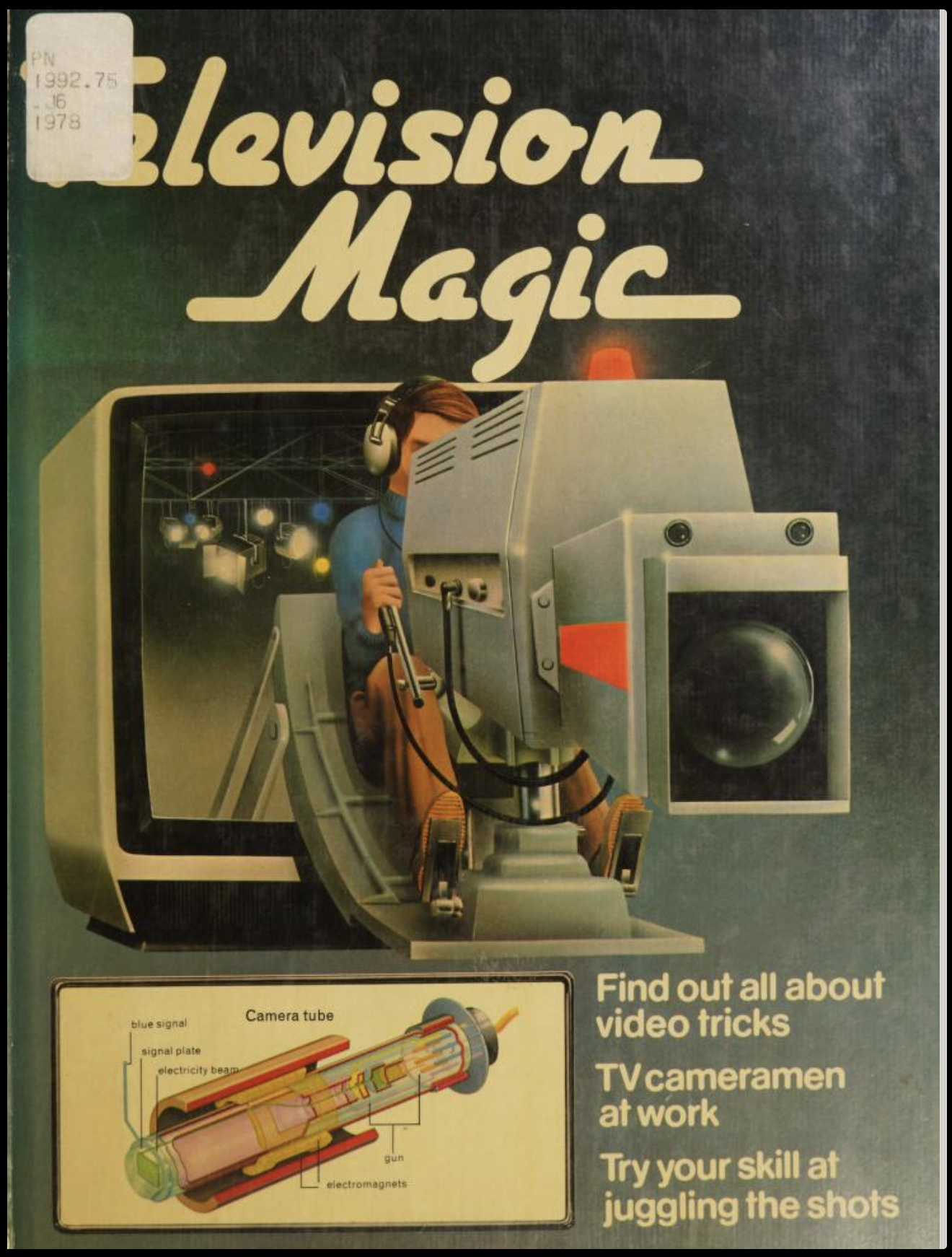
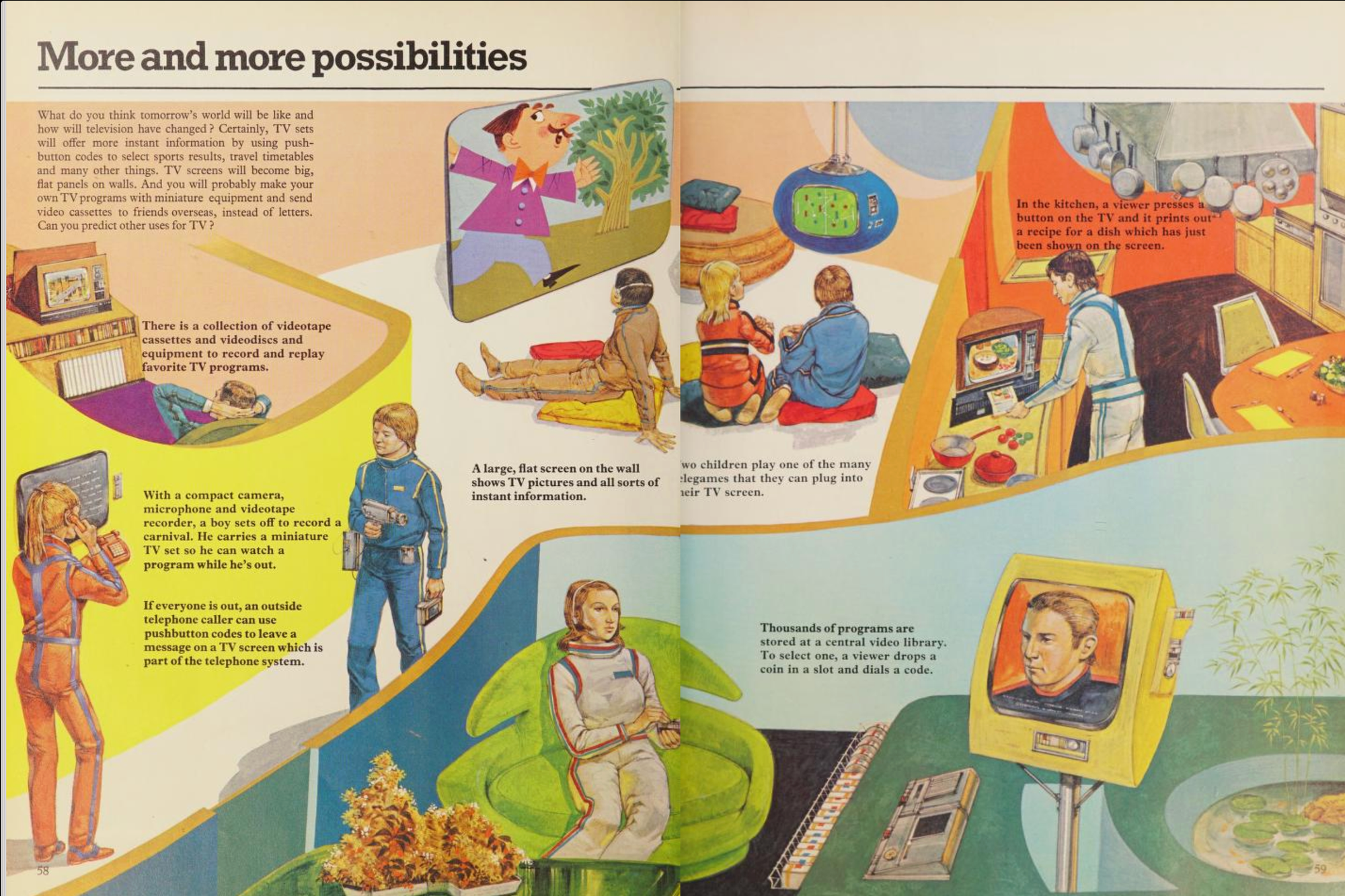
The front cover and "more and more possibilities" page of Television Magic
Continuing an accidental theme of my articles, let's take a look at how the world of today looked from the world of yesteryear.
First up is a strangely 1950s-looking scene of a man relaxing in his home watching a kind of art deco TV under which there are some video cassettes and what appears to be a large radiator. Maybe they thought TVs would continue to need "warming up".
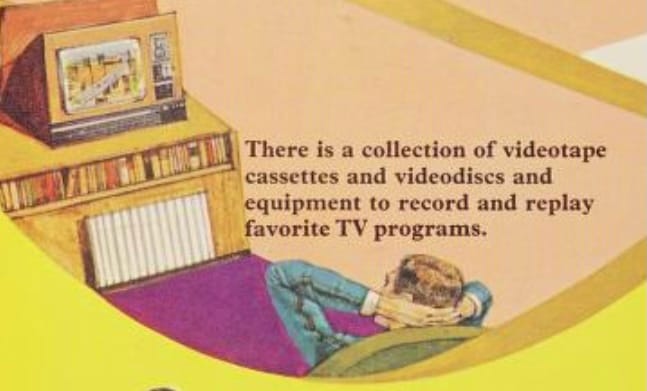
The text informs us that "there is a collection of videotape cassettes and videodiscs and equipment to record and replay favourite TV programmes". As predictions of the future go, this was a bit of a no-brainer. Rudimentary home video recorders had been around since the 1960s and the mass market Betamax and VHS systems had been launched in the mid 1970s. Even the futuristic-looking LaserDisc with its 12-inch shiny metallic discs would have been ready for release about the same time as this book was in 1978.
What you could argue is missing from this statement is the mainstream distribution of movies by video cassette rather than by recording programmes off the TV. By the early 1980s video rental stores were popping up all over the place offering people the chance to watch Hollywood movies (and some other more, erm, esoteric productions) in the comfort of their own home.
In a similar vein the prediction of kids playing video games that they can plug in to the television was a pretty safe bet. The Atari VCS, the first commercially successful game console, had been launched in 1977 and more basic Pong-type games had been around for several years before that.
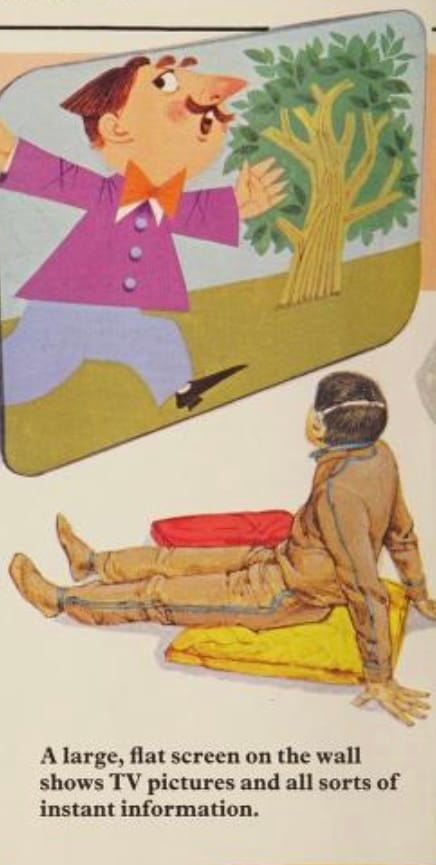
Next up, a boy watches "a large, flat screen on the wall [which] shows TV pictures and all sorts of instant information". Well, duh! Who doesn't have a large flat screen TV these days? It's basically impossible to buy a giant cathode ray tube television any more.
This frame is also interesting for the first appearance of the "futuristic track suit" which the illustrator of this page had decided we'd all be wearing. This being the 1970s though, the boy has chosen to wear an unpleasant shade of orangey brown.
The "futuristic track suit" in its blue variation is worn by another boy who's off to watch a carnival whilst carrying his own portable TV station. He's got a small TV camera, a microphone and belt-mounted video recorder. In his other hand is a small portable TV because he might get bored filming a carnival and want to watch a programme, probably of somebody else doing something more interesting than video taping a carnival.
What intrigues me about this scenario is that it's precisely what we do now except we can do it all, and more, with a single handheld device called a smartphone. I think this is one of the interesting things about predictions of the future. They tend not to imagine a whole new class of device but rather a miniaturisation or slight evolution of an existing device. A recurrent theme I've seen in near future sci-fi TV programmes recently is some kind of evolved smartphone, usually one that is transparent slab of plastic with a display projected either on or just above it. I'd bet that in twenty years time whatever we have is less like a phone and more like something we can't easily imagine right now.
The other thing missing from the book's prediction of the carnival recording revolution is the transmission of video from the handheld device. The idea of being able to send live sound and images from pretty much anywhere to be viewed by anyone anywhere else would have blown people's minds back then. God only knows what they would have made of TikTok.
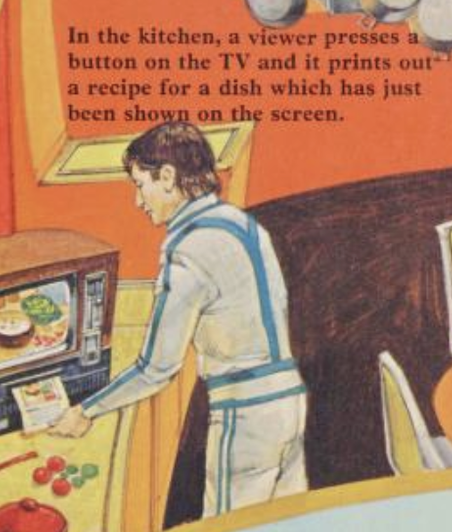
Over in the kitchen of the future another tracksuit wearer (cream and blue model) is able to print out a recipe for a dish that has just been shown on the screen. They've got a fairly chunky looking CRT television and the printer is a black box underneath it. By the look of things it prints on relatively small A5 paper because people in the future will all have bionic eyesight and won't struggle with small print.
This scenario is pretty common today. We don't have dedicated printers attached to our TVs but the idea of downloading a recipe from a TV show is widely implemented via an on-screen web link or QR code. We'd probably download it to our marvellous multifunction smartphones.
Finally we get to the extreme futurism of Netflix circa 1978
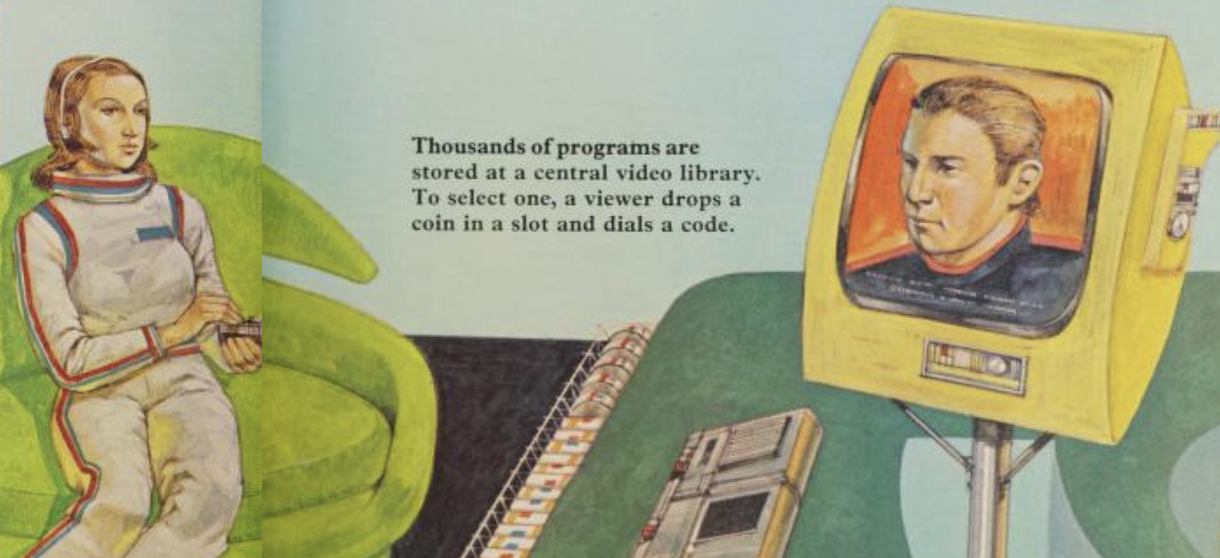
Apparently, "thousands of programmes are stored at a central video library. To select one, a viewer drops a coin in a slot and dials a code". I love the way that this is so obviously video on demand and yet it's so far away from how it actually ended up working.
Dropping a coin in a slot is hilariously low tech. Presumably it was inspired by the kind of coin-operated electricity meters which were common in rental homes at the time. You'd put a fifty pence coin in the meter, turn the handle and your lights would come on. Once you'd used up your 50 pence-worth you'd be fumbling in the dark again for another coin.
I've no idea why the woman (premium edition white tracksuit with both red and blue trim) has a large TV on a metal pole which has emerged from a hole that seems to be the wrong size and shape for it to have fitted through. I'm even more confused as to why she has the TV screen pointed towards the opposite corner of the room from where she is sitting. Maybe her 50p movie is so badly made she can't bear to look at it.
There's no mention of how the programmes get from the central video library to the user's home or how the fifty pence coins make the journey in the opposite direction. Maybe these were left as exercises for the reader's imagination. Or maybe the author had lost interest by the time they got to this last page of the book.
For all the sarcasm above I'm actually quite impressed with these predictions from nearly half a century ago. They've basically all come true albeit not quite in the style illustrated. On the other hand, let's be grateful that the universal tracksuit has yet to come along.





